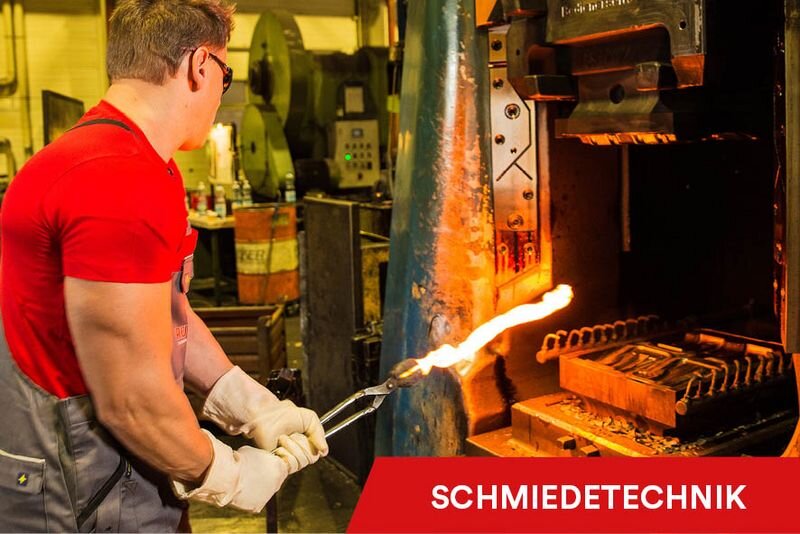"Forging" is the collective name for all processes in which a metal workpiece is deformed by heat and pressure. The forging of metals is one of the oldest crafts of man. For thousands of years, it has been an essential prerequisite for the introduction of improved farming methods, for the development of other crafts and trades, for the production of equipment, weapons and for shipbuilding.
The history of blacksmith's craft

Due to the ability to create objects with the help of fire, blacksmiths have always had a special position in society. In Greek/Roman times, these craftsmen were assigned their own deities with Hephaestus and Vulkanus. In Germanic mythology, Siegfried the Dragon Slayer paid was another example.
It is due to early finds from India and Egypt that smithery originated over 5,000 years ago. At the beginning, meteorite iron was forged. According to historical findings, the invention of hardenable iron (steel) was first achieved by the Hittite people at the beginning of the Iron Age about 3,800 years ago. They smelted iron in bloomery furnaces for the first time. In the Middle Ages, the tasks in smithery multiplied. Soon forged products took on such an important position in everyday life and weapons technology that a wide variety of professional profiles of blacksmiths developed. In the age of guilds, there were different names for these trades. Some were named after the material to be processed, such as gold or coppersmiths, the others after the product to be created, e.g. nail, weapons, tool or hoof smiths. Increasing prosperity maintained the heyday of crafts and trade.
From the 12th century, the first professional associations were formed: the guilds. In many cases the blacksmith would only complete a few steps of production. The resulting routine allowed for consistent quality, but at the expense of the variety of craftsmanship. From the 14th century, the small blacksmiths formed their own guild. Their products were door, curtain, chest and cassette locks, keys, as well as fittings, door hinges, door handles and door knockers. From the 17th century, these early specialists were referred to as "the locksmiths". In addition to the specialists in mechanics, the gunsmiths also specialized very early on.
In the second half of the 19th century, a certain percentage of forges developed into industrial metalworking enterprises in urban regions. However, there was little specialization in the countryside. Thus, a village blacksmith had to shoe horse hooves, to tire wagon wheels, to repair plowshares and other farm implements. With the mechanization of agriculture, the village blacksmiths also decreased, and with the establishment of industrial enterprises, the specialization became more and more refined.
